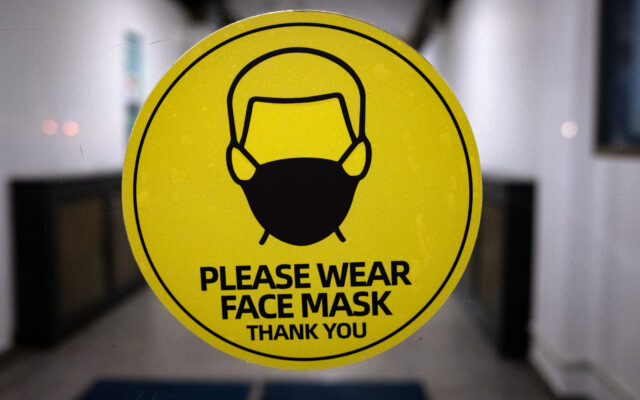
Maine will report how many students and teachers are vaccinated this fall
By Jessica Piper, Bangor Daily News Staff
Maine will publicly share information about COVID-19 vaccination rates among K-12 teachers and students this fall amid a renewed effort to increase vaccination rates as schools prepare to return to in-person learning.
The focus on school vaccinations comes as COVID-19 infections in Maine have risen sharply with the arrival of the more contagious delta variant. The U.S. Centers for Disease Control and Prevention recommended this week that all teachers and students wear masks indoors regardless of vaccination status.
Maine will leave the decision on masking in schools to individual districts but is redoubling efforts to vaccinate teachers and older students eligible for vaccines as the school year begins, Maine Department of Health and Human Services Commissioner Jeanne Lambrew said. That will include an online dashboard where the state will publish data on the percentage of vaccinated students and staff in each school administrative unit.
Information about student vaccination rates will be posted every two weeks beginning in mid-August, while staff rates will be shared beginning in September. Vaccination rates will be collected from schools, similar to the process the state has used for reporting vaccinations among nursing home and hospital employees.
Lambrew pitched the information sharing aspect as a way to help school districts make better decisions to limit the spread of the virus in their community, and help the state determine where it should target its vaccination efforts.
“Connecting this information on vaccinations directly with school communities can help guide efforts on where to bring the vaccine, and where to educate people, where vaccine rates are low,” Lambrew said.
The vaccination clinics will target teachers and older students, as children under the age of 12 remain ineligible for any of the COVID-19 vaccines. Vaccination rates among teenagers in Maine remain lower than other groups, with 55 percent of Mainers between the ages of 12 and 19 having received at least one dose, compared to 74 percent of people aged 20 and older, according to state data.
Vaccination rates among younger people also vary widely by county. Just over 32 percent of Somerset County teenagers have received at least one dose compared to nearly 70 percent in Cumberland County.
Maine held vaccine clinics in some high schools this spring after younger Mainers became eligible in April. The state is planning to re-up those efforts in the fall with in-school clinics, now able to serve students as young as 12, Lambrew said. The department also has plans to distribute information about the vaccine to parents.
The COVID-19 vaccine is not required in public schools, although Maine requires students to be immunized against a number of diseases including tetanus, pertussis, measles, mumps, rubella and polio. Religious and philosophical exemptions are not permitted after a 2019 law overwhelmingly upheld by voters in a referendum last year. Unlike the vaccines for those diseases, however, the COVID-19 vaccine does not yet have full FDA approval, only emergency authorization.
Among institutions of higher education in Maine, several private colleges have made the vaccine mandatory for returning staff and students, while the University of Maine system is strongly encouraging it, but will mandate it once the FDA authorizes full approval. Professors at the University of Maine System have pushed for a mandate sooner.
Such a requirement could face more pushback at the K-12 level. The Maine Education Association, the state’s major teachers union, said it was awaiting more information from the state on vaccination plans for the fall.
Elaine Boulier, superintendent for two school districts in Aroostook County, understood the state’s goal of collecting school metrics, but was concerned that some teachers are apprehensive about potential vaccine mandates and may see this as a step in that direction.
“I certainly wouldn’t want to be the governor; I wouldn’t want to be the president,” she said. “I wouldn’t want to be any of those entities. It’s not an easy place to be, these aren’t easy decisions to make.”
BDN writer Hannah Catlin contributed to this report.